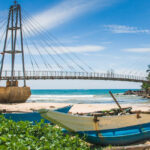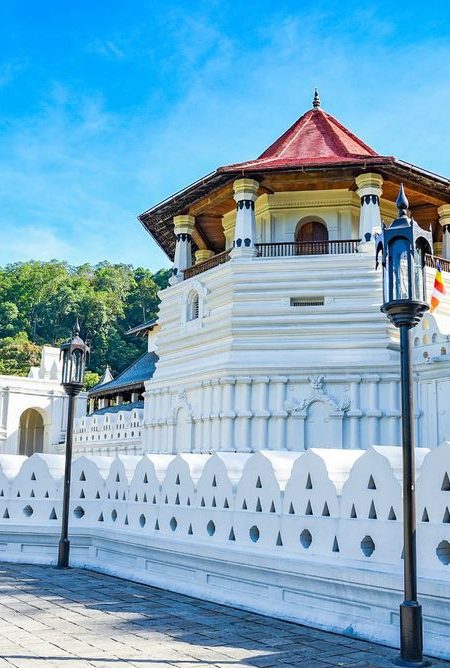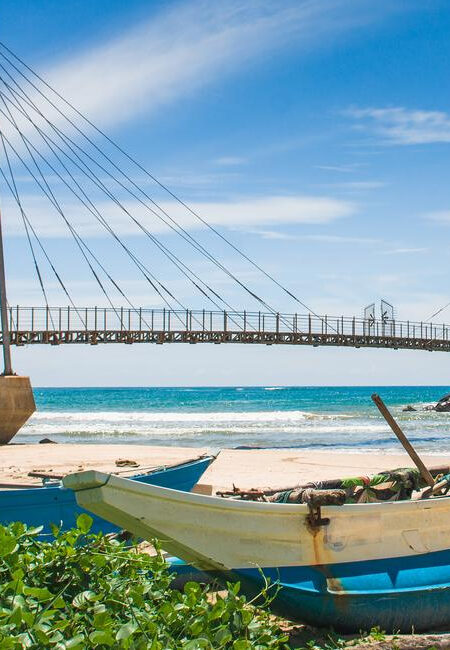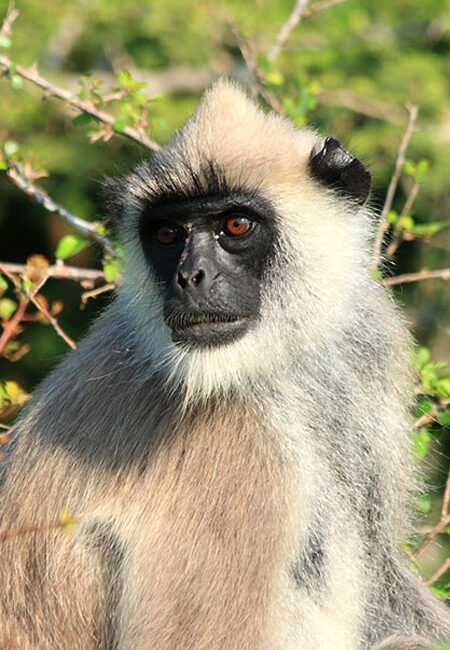Travellers who visit there are quick to appreciate its picturesque coastal city off the Eastern Province of Sri Lanka. Trincomalee is famous for its untouched beaches, historic landmarks and vibrant culture making it a can’t miss destination for the traveler looking for the combination of the unspoiled and the historic. And an ancient Hindu temple known as the Koneswaram Kovil sits atop a steep cliff jutting over the Indian Ocean is one of the most iconic landmarks in Trincomalee. In this all encompassing guide you will learn about the history, attractions, and experiences that make Trincomalee and Koneswaram Kovil a unique travel destination.
The Rich History of Trincomalee
Ancient Roots
Trincomalee is one of the most ancient cities of Sri Lanka; its history being over two millennia old. Known through various ancient texts and chronicles it is mentioned that the city was an important port and religious center.
Colonial Influence
Like elsewhere, Trincomalee has influenced and the imprint left by the Portuguese, Dutch, and British colonial powers. These colonial rulers all had their mark on the city and together help contribute to its cultural and architectural cultural heritage.
Post-Colonial Era
Even during post colonial era, the city of Trincomalee also developed and kept its historical and cultural track. Today it is a symbol of Sri Lankan resilience and of the spirit of the Sri Lankan people.
Koneswaram Kovil
Historical Significance
One of most revered Hindu temples in Sri Lanka is Koneswaram Kovil, or Temple of a Thousand Pillars. Its origins go deep into ancient times, and for centuries, this has been a good place for the Hindus to worship the Lord.
Architectural Marvel
The architecture of the temple blends Dravidian and Pallava art in great shade of nuances and is outstanding in its intricate carvings and vibrant sculptures and majestic gopuram (tower). The complex has various shrines to different deities, and gives amazing looks towards the landscape and the ocean in the area.
Religious Importance
One such deities of Hinduism is Lord Shiva whose temple is called Koneswaram Kovil. As a major pilgrimage place it’s visited by devotees across the world who seek blessing & worship to the divine.
Top Attractions and Activities

Nilaveli Beach
With just a quick drive from Trincomalee, you’ll find Nilaveli Beach, known for its soft white sands and crystal clear waters. A nice place for sunbathing, swimming, snorkeling and to escape the hustling and bustling of city life.
Pigeon Island National Park
Off the coast of Nilaveli lies Pigeon Island National Park where marine life enthusiasts can enjoy a paradise. Coral, sharks and turtles as well as fish thrive in the park’s vibrant reefs. Snorkeling and diving in these waters offers an unforgettabad underwatet adventure.
Fort Frederick
A historical site to see is Fort Frederick, a colonial era fort, built first by the Portuguese, expanded later by the Dutch and then by the British. The fort’s structure shows Trincomalee’s colonial days and is close to the picturesque ruins of the old Dutch cemetery, whereas the fort presents a panoramic view of the city and the ocean.
Trincomalee War Cemetery
The War Cemetery at Trincomalee is a sad reminder of some of the World War II tragic sacrifices that occurred in this area. Allied nation soldiers rest in the cemetery, making for a place to reflect and remember.
Hot Wells of Kanniya
Just outside Trincomalee are the Hot Wells of Kanniya, a set of hot springs. Thought to have therapeutic properties these natural thermal springs offer visitors the opportunity to take a restful soak in warm waters.
The Local Culture

Traditional Cuisine
Fresh seafood is served in delectable traditional Sri Lankan cuisine. Spicy crab curry, succulent prawns are all treat for the taste buds. You should definitely try kottu roti, a chopped roti, vegetables, and meat street food.
Festivals and Celebrations
Festivals and celebrations of Trincomalee are well known for the diversity of the city. Grandeur and devotion is what distinguishes the annual Koneswaram Kovil festival. There are colorful processions, traditional music and dance performance and devotees and tourists that come to the festival.
Handicrafts and Souvenirs
Trincomalee’s local markets boast a wonderful range of local handicrafts and souvenirs for visitors to purchase such as intricately woven baskets and wooden carvings as well as more traditional jewellery. They’re also great things to remember a trip by.
Practical Tips for Visiting
Best Time to Visit
Trincomalee’s best months to go are from May to September when temperatures are warm and essentially dry, perfect for beach activities and sightseeing. Koneswaram Kovil festival takes place mostly in April when one can fully enjoy temple’s new life!
Getting There
Road, rail, and air connect Trincomalee. It lays about 260 kilometres (160 miles) from the capital of Sri Lanka, Colombo. There are regular buses, trains on Colombo to Trincomalee route which take you on scenic journey through the Sri Lankan countryside. Alternatively domestic flights are available from Colombo to Trincomalee.
Accommodation Options
Accommodation in Trincomalee is quite varied. There are no end of luxury resorts with ocean views, as well as much cheaper options like guesthouses. Nilaveli, Uppuveli, and the city centre are some popular places for those who can afford to choose where to stay.
Respecting Local Customs
To visit Koneswaram Kovil and other religious sites, you are advised to dress modestly, and take off your shoes before entering. Speaking respectfully of local customs and traditions will make your travel experience better and will show you respect the culture.













